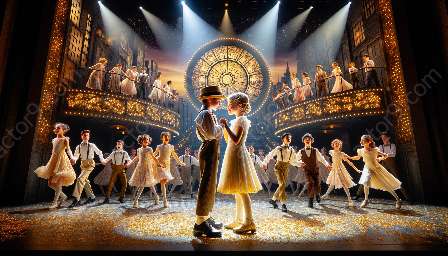Adapting a pre-existing work, such as a novel or film, into a compelling script for a Broadway show involves a series of intricate steps. It requires careful consideration of the original material, understanding the nuances of scriptwriting for the stage, and incorporating the elements that make a successful Broadway production. Let's delve into the detailed process of adapting a pre-existing work into a script for a Broadway show.
Understanding the Original Work
The first step in adapting a pre-existing work for the Broadway stage is to deeply understand the source material. Whether it's a novel, film, or any other form of pre-existing work, it's crucial to analyze the characters, plot, themes, and overall tone. This involves identifying the core elements that made the original work successful and understanding how to translate them into a live performance on stage.
Identifying the Essence of the Story
Once the original work is thoroughly understood, the next step is to identify the essence of the story. This involves distilling the core message and emotional impact of the original work. It's essential to pinpoint what resonates with audiences and what makes the story compelling. Understanding the essence of the story is crucial for maintaining the integrity of the source material while adapting it to fit the requirements of a stage production.
Adapting to the Stage
Adapting a pre-existing work for Broadway means transforming it from its original form into a script that is suitable for live theater. This process involves making strategic decisions about which elements of the original work will be emphasized, condensed, or reimagined to fit the constraints and possibilities of the stage. Considerations such as set design, choreography, and musical arrangements must be taken into account during this adaptation process.
Character Development and Arcs
One of the key aspects of adapting a pre-existing work into a Broadway script is the development and evolution of the characters. On stage, the characters must engage and captivate the audience in a way that may differ from their portrayal in the original work. This may involve enhancing character arcs, providing more depth to the characters, or introducing new dimensions that align with the demands of live theater.
Structuring the Story for the Stage
Structuring the story for the stage involves reimagining the pacing, dramatic tension, and overall flow of the narrative. The scriptwriter must carefully craft the plot to ensure that it engages the audience throughout the live performance. This may require making changes to the original plot to create a more dynamic and visually compelling experience on stage.
Exploring Musical Elements
When adapting a pre-existing work into a Broadway script, it's essential to consider the musical elements that will enhance the storytelling. Whether it's incorporating existing songs from the original work or creating new musical compositions, the scriptwriter must work closely with composers and lyricists to seamlessly integrate the music with the narrative. The songs and musical numbers should elevate the emotional impact of the story and contribute to the overall theatrical experience.
Collaboration with Production Team
Adapting a pre-existing work into a Broadway script is a collaborative effort that involves extensive communication and coordination with the production team. This includes directors, choreographers, designers, and other key creatives who will contribute to the overall vision of the stage adaptation. Open communication and synergy among the team members are essential for successfully adapting the pre-existing work into a compelling Broadway show.
Revisions and Refinements
Throughout the adaptation process, it's important to be open to revisions and refinements. Scriptwriting for Broadway often involves multiple iterations and feedback from the creative team. This allows for fine-tuning the script, addressing any challenges that arise during rehearsals, and ensuring that the adaptation effectively translates the essence of the original work onto the stage.
Preserving the Intention of the Original Work
While adapting a pre-existing work into a Broadway script involves making creative decisions and adjustments, it's crucial to preserve the intention and spirit of the original work. The adaptation should stay true to the themes, messages, and characters that made the original work resonate with audiences. Balancing innovation with faithfulness to the source material is a delicate yet essential aspect of the adaptation process.
Conclusion
Adapting a pre-existing work into a compelling script for a Broadway show is a multifaceted and demanding process that requires a deep understanding of both the original work and the intricacies of scriptwriting for the stage. It involves careful consideration of character development, plot structuring, musical elements, and collaborative teamwork. Successfully adapting a pre-existing work for Broadway requires a blend of creativity, respect for the source material, and a keen awareness of the unique demands of live theater.



































